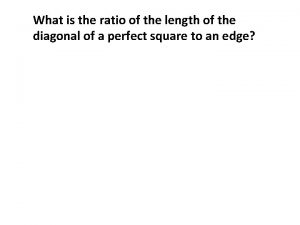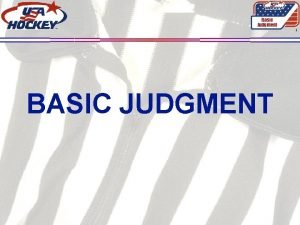Line and Length Judgment Purpose Correct judgment of





- Slides: 5

Line and Length Judgment Purpose: Correct judgment of line and length is a vital part of batting. These drills assist batsmen in developing correct judgment. 1 2 1. Cones are used to mark zones of different lengths. A thrower throws a soft ball over-arm to land in the different zones. The batsman must play the appropriate shot according to where the ball lands. 2. A fourth stump is placed two stump widths outside the off-stump. A chalk line is drawn from this stump. A thrower throws balls from a distance of 10 metres and the batsman uses this line as a guide as when to play or leave the ball.

Eye-Hand Coordination Purpose: The following drills can be used for the improvement of eye-hand coordination and peripheral vision. 1 2 3 4 1. Each player starts with a ball in his right hand simultaneously throw to each other’s left hand. The players try to keep the ball moving as fast as possible for about two minutes. As a variation, they can throw from right hand to right hand. 2. A player starts with a ball in each hand. He throws both balls simultaneously for his partner to catch. This exercise can be done individually by throwing two balls simultaneously against a wall and catching them on the rebound. 3. Wall tennis with a stump. 4. The player lobs a ‘reaction’ ball against a wall and tries to catch as many as possible in 60 seconds.

Eye-Foot Coordination Purpose: The following drill can be used for the improvement of moving the feet quickly to visual stimulation. 1 1. Two different color cones are placed in front of a player. His partner flashes a colored ball. The player must react as quickly as possible and touch the corresponding colored cone with his left foot.

Reaction Drills 1 2 3 1. A player sits on a swiss ball. His partner throws a series of tennis balls under-arm, aiming to hit him on the head. He must avoid the ball while maintaining his balance. 2. The player stands facing a wall. His partner throws a reaction ball at different heights for him to catch. He then stands with his back to the wall and turns to catch the ball as hears it hitting the wall. 3. A player stands in a batting stance position. His partner throws balls at his head for him to take evasive action.

Stability Drills 1 2 3 1. A player stands on one leg. His partner throws soft balls at him from a distance of 10 metres. He must take evasive action retaining his balance throughout. 2. A player sits on a swiss ball with a stump in his hands. His partner throws soft balls at him. He must either take evasive action or hit the ball, retaining his balance. 3. A player stands on one leg with a stump in his hands. His partner throws soft balls at him. He must either take evasive action or hit the ball, retaining his balance.









